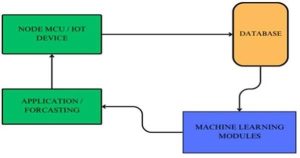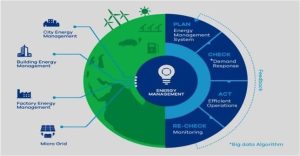
PROJECT
Internet of Things and Artificial Intelligence Energy Management System for Homes and Organizations.
TEAM MEMBERS
Bryan Opoku Kofi Mawunyo
- Koforidua Technical University
- 0508567564
- opokukofimawunyo@g mail.com
Addo Godfred Kwakye
- Koforidua Technical University
- 055334766
- addogodfredkwakye@g mail.com
Benjamin Kwofie
- Koforidua Technical University
- 0246658727
- benjaminkwofie@gmail. com
Fabian Baah
- Koforidua Technical University
- 0248145979
- Fabian.baah@ktu.e du.gh
Bryan Opoku Kofi Mawunyo
- Koforidua Technical University
- 0508567564
- opokukofimawunyo@g mail.com
ABSTRACT
In a bid to address various socio-economic challenges, students from Technical Universities in Ghana proposed a range of cutting-edge solutions. From a Biometric Health Identification System to a solar fruit dryer, and from sustainable paper packaging to a portable renewable power generation system, these innovations aim to transform industries and improve lives. In the healthcare sector, the Biometric Health Identification System and the MedEase app seek to enhance patient identification, data management, and supply chain efficiency. Meanwhile, the PECTA Blood Warmer promises to revolutionize blood transfusion safety. In agriculture, the solar fruit dryer and the improved Plastic Film Mulch Laying Implement aim to reduce post-harvest losses and promote sustainable food production. In energy, the IoT and AI Energy Management System and the portable renewable power generation system seek to optimize energy consumption and reduce reliance on non-renewable sources. Finally, in construction, sustainable flood resilient homes and the use of plastic waste as a binding agent for producing roof and wall tiles offer innovative solutions to environmental challenges.
These pioneering projects have the potential to drive positive change in Ghana and beyond.
Introduction
Energy management is vital for industrial growth. Ghana faces power supply issues, including "Dumsor" (frequent outages), due to both government challenges and inefficient energy practices in homes and businesses(Lawal & Rafsanjani, 2022). Many businesses struggle with high costs and poor energy audit systems, impeding GDP growth(Lawal & Rafsanjani,2022).
A new AI-driven system aims to address these problems by investigating:
- Can a single sensor accurately identify energy consumption patterns and high-use areas?
- How can secure IoT meter data improve billing transparency?
- How can secure IoT meter data reduce tampering?
- What cost-effective, scalable IoT solutions can enhance energy conservation in homes and businesses?
1.1 Approach
Our approach focuses on using a single sensor connected to the main electrical switch. This potentially reduces cost of acquisition for homes and businesses (especially SMES).

2. Results and contributions
This system will empower organizations and households to monitor their energy consumption. This will promote a culture of optimizing energy usage, thereby reducing the burden on the government's energy resources.
Real-time monitoring promotes awareness and accountability, potentially leading to fairer energy billing.

practices. This project aligns with the goals of Industry 4.0, which emphasizes data-driven decision-making.

REFERENCES
Lawal, K., & Rafsanjani, H. N. (2022). Trends, benefits, risks, and challenges of IoT implementation in residential and commercial buildings. In Energy and Built Environment (Vol. 3, Issue 3). https://doi.org/10.1016/j.enbenv.2021.01.009
Lawal, K., & Rafsanjani, H. N. (2022). Trends, benefits, risks, and challenges of IoT implementation in residential and commercial buildings. In Energy and Built Environment (Vol. 3, Issue 3). https://doi.org/10.1016/j.enbenv.2021.01.00
